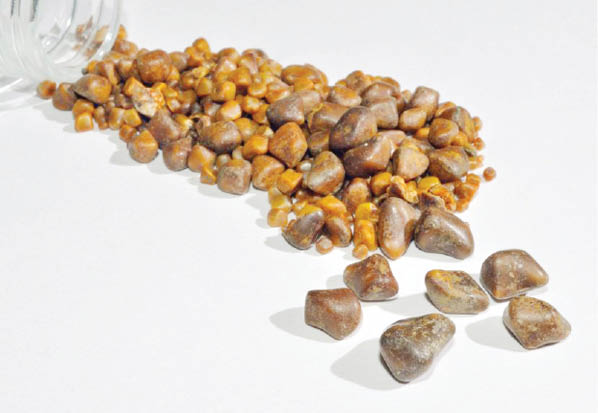Gallstones were removed from my body
Permit me a space in your weekly health column, of which I am a big fan, to ask about Gallbladder stones. At the age of 51 years, I am suffering from abdominal pain and indigestion with yellowing of the eye. Gallstones were diagnosed and removed. I wish to know more. COVID-19 survivors could have long-lasting […]

Permit me a space in your weekly health column, of which I am a big fan, to ask about Gallbladder stones. At the age of 51 years, I am suffering from abdominal pain and indigestion with yellowing of the eye.
Gallstones were diagnosed and removed. I wish to know more.
- COVID-19 survivors could have long-lasting immunity – Study
- I never thought I would make it — COVID-19 survivor
Patti K
Thanks, Patti, for your question and wishing you quick recovery. Gallstones are formed in the gallbladder, a small organ located under the liver. The gallbladder helps in the digestive process by storing bile and secreting it into the small intestine when food enters. Bile is a fluid produced by the liver and is made up of several substances, including cholesterol and bilirubin and bile salts. Gallstones are pieces of solid material that form in the gallbladder. These stones develop because cholesterol and pigments in bile sometimes form hard particles.
The two main types of gallstones are:
1. Cholesterol stones: Usually yellow-green in color, approximately 80% of gallstones are cholesterol stones.
2. Pigment stones: These stones are smaller and darker and are made up of bilirubin.
Several factors may come together to create gallstones, including:
1. Genetics
2. Body weight
3. Decreased motility (movement) of the gallbladder
4. Diet
Gallstones can form when there is an imbalance in the substances that make up bile. For instance, cholesterol stones may develop as a result of too much cholesterol in the bile. Another cause may be the inability of the gallbladder to empty properly. Pigment stones are more common in people with certain medical conditions, such as cirrhosis (a liver disease in which scar tissue replaces healthy liver tissue) or blood diseases such as sickle-cell anemia.
Risk factors for getting gallstones include:
1. Genetics: If people in your family have had gallstones, you are at increased risk of developing gallstones.
2. Obesity: This is one of the biggest risk factors. It can cause a rise in cholesterol and can also keep the gallbladder from emptying completely.
3. Estrogen: It can increase cholesterol and reduce gallbladder motility. Women who are pregnant or who take birth control pills or hormone replacement therapy have higher levels of estrogen and may be more likely to develop gallstones.
4. Gender and age: Gallstones are more common among women and older people.
5.Cholesterol drugs: Some cholesterol-lowering drugs increase the amount of cholesterol in bile, which may increase the chances of developing cholesterol stones.
6. Diabetes: People with diabetes tend to have higher levels of triglycerides (a type of blood fat), which is a risk factor for gallstones.
7. Rapid weight loss. If a person loses weight too quickly, his or her liver secretes extra cholesterol, which may lead to gallstones.
Gallstones often don’t cause symptoms. Those that don’t are called “silent stones.” A person usually learns he or she has gallstones while being examined for another illness.
When symptoms do appear, they may include:
1. Pain in the upper abdomen and upper back; the pain may last for several hours.
2. Nausea
3. Vomiting
4. Other gastrointestinal problems, including bloating, indigestion and heartburn and gas
How are gallstones diagnosed?
Physical examination and doing various other tests, including the following:
1. Blood tests: Blood tests may be given to check for signs of infection or obstruction and/or to rule out other conditions.
2. Untrasound: This procedure produces images of various parts of the body and can be used to identify gallstones.
3. CAT scan: This test uses specialised X-rays to create cross-section images of organs and body tissues.
4. Endoscopic ultrasound: This test combines ultrasound and endoscopy to look for gallstones.
How are gallstones treated?
1. Gallstones are usually treated with surgery to take out the gallbladder. The traditional operation is called an open cholecystectomy. A newer procedure, called laparoscopic cholecystectomy is less invasive, has fewer complications, and is used more often.
2. At times due to some medical conditions drugs can be prescribe without doing surgery.
